 Image search results - "Anno" Image search results - "Anno" |
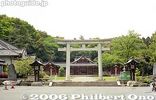
To Kannon-yama
|
|

The Kannon statue peers over the trees.
|
|

Standing 41.8 meters high, equivalent to a 9-story building.
|
|

Built in 1936.
|
|

Made of concrete.
|
|
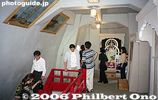
One of 20 Buddha figures inside the Kannon.During New Year's, many people visit the Kannon.
|
|
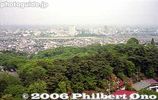
View from Kannon-yama.
|
|
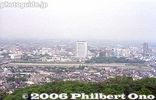
View of Takasaki. The tall building is Takasaki City Hall.
|
|
|
|
|
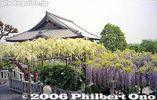
Wisteria
|
|
|

Kannon and bridge, Takasaki, Gunma
|
|
|

The Sanno Matsuri Festival is one of Japan's Big Three Festivals and one of Tokyo's Big Three Festivals held in mid-June during several days. The main highlight is the Jinko-sai Procession held every two years. The 600-meter long procession consists of about 500 people parading through central Tokyo near the National Diet, Imperial Palace, Tokyo Station, and Ginza. It includes three portable shrines, carriages, and flower floats. Various events are also held at Hie Shrine which holds the festival. Jinko-sai Procession left Hie Shrine at 8 am on June 11, 2004. Before noon, they approach the Imperial Palace. 山王まつり神幸祭
|
|

The Jinko-sai Procession passes in front of the Imperial Palace.
|
|

For a procession this large and grand, the crowd of spectators was extremely sparse. Good for photographers like me, but it was strange.
|
|
|

Hie Shrine's Sanno Matsuri Jinko-sai Procession in front of Imperial Palace.
|
|
|

One of the three portable shrines.
|
|

The original procession included many high floats. However, due to overhead power lines and overpasses, such floats cannot be included.
|
|
|

Omiko Shrine maidens
|
|

Flower float, Sanno Matsuri
|
|
|
|

Rest stop near Sakashita-mon Gate at the Imperial Palace.
|
|
|
|
|

Shrine maidens dance in front of the three portable shrines near Sakashita-mon Gate.
|
|
|
|
|
|
|

During this break period, the shrine priest and other representatives enter the Imperial Palace to pray for the peace, happiness, and prosperity of the Imperial family. Hie Shrine is the only shrine in Japan bestowed with this privilege.
|
|
|
|

Some entertainment.
|
|
|
|
|
|
|
|

The procession passes by Tatsumi Turret as it leaves the Imperial Palace.
|
|

The Takayama Festival is held twice a year, during April 14-15 and Oct. 9-10. The spring festival is held by Hieda Shrine and it is called Sanno Matsuri. The festival features twelve ornate "yatai" floats which are displayed and pulled along the streets. In a large plaza, katakuri puppets perform on a few of the floats. The festival is also dramatic at night with a float procession. The Takayama Festival procession in spring starts at Hieda Shrine. Photo shows a banner reading "Hieda Jinja." 祭行列
|
|
|

Hie Shrine hall. The shrine is on Shiroyama Hill. 日枝神社On Dec. 1, 2016 (JST), Takayama Matsuri Festival was inscribed as a UNESCO Intangible Cultural Heritage of Humanity as one of 33 "Yama, Hoko, and Yatai float festivals in Japan."
|
|
|

The portable shrine (mikoshi) passes through Hie Shrine's torii to join the procession. 神輿
|
|
|
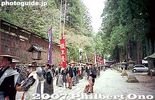
Shrine officials in the procession.
|
|

A mikoshi passes by Tatsumi Turret of the Imperial Palace durng the Sanno Matsuri Jinko-sai.
|
|
|
|
|
|
|

Shrine maidens
|
|
|

Mikoshi
|
|
|
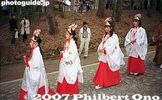
Shrine maidens
|
|

Road to Tokyo Station.
|
|

Shrine maidens
|
|

Crossing the street.
|
|
|
|
|
|

All the auto traffic and urban noise robbed the dignity of the solemn procession.
|
|
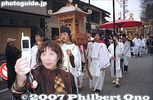
A middle-aged woman uses her camera phone to photograph herself. "I was here!"
|
|

Crossing the street near Maru-biru Building. They proceeded to Tokyo Station, Kyobashi, Nihonbashi, Shimbashi, and Ginza before returning to Hie Shrine at 5:30 pm.
|
|
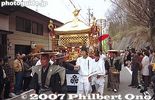
Portable shrine 神輿
|
|

Map of Jinko-sai Route.
|
|

Portable shrine 神輿
|
|

On the next day on June 12, 2004, was Miya-iri or portable shrines entering Hie Shrine. Led by this cart of festival musicians. 山王まつり宮入り
|
|

Shrine priest
|
|
|
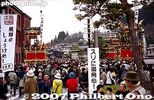
Large crowd gather to watch the karakuri puppets perform on the ornate floats. Sign says "Watch out for pickpockets."
|
|
|

Large crowd gather to watch the karakuri puppets perform on the ornate floats.
|
|

Children dressed as tekomai, Sanno Festival.
|
|
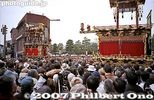
Only four of the 12 floats have karakuri puppets which perform. Takayama Matsuri, Gifu
|
|

Parish members reach the shrine.
|
|

The karakuri puppets first appeared on the Takayama Matsuri floats in the 18th century. They were handcrafted by artisans in Kyoto.
|
|

Parish members wait for the portable shrines to arrive. The paper lanterns are written with the names of the parish.
|
|

Japan has three basic types of karakuri puppets based on the region: Kyoto, Nagoya, and Kanto (Tokyo area). The Takayama karakuri are the Nagoya-type.
|
|
|

The puppets come out on a plank sticking out of the float and perform in a mini play with various stunts.
|
|

A mikoshi arrives at Hie Shrine.
|
|

Ryuujintai Karakuri 龍神台からくり
|
|

They pass through the ring.
|
|

Sanbasou Karakuri 三番叟からくり
|
|

In front of the shrine, the priest blesses the mikoshi portable shrine.
|
|

Sanbasou Karakuri 三番叟からくり
|
|

The portable shrines came one after another.
|
|
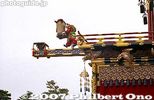
Ryuujintai Karakuri 龍神台からくり
|
|
|
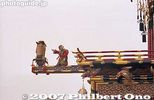
Ryuujintai Karakuri 龍神台からくり
|
|
|
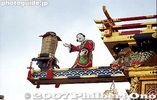
Ryuujintai Karakuri, Takayama Festival, Gifu 龍神台からくり
|
|
|

The karakuri perfom one float at a time.
|
|
|
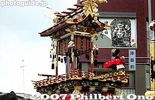
Shakkyoutai Karakuri which transforms into a lion dance. 石橋台からくり
|
|

Arai Kannon statue. Wash the part of the body to cure the corresponding part of your own body. 洗い観音
|
|
|
|

Ryuujintai Karakuri 龍神台からくり
|
|

They used to have a tawashi brush to wash the statue, but that wore out the statue. So the replacement statue is now washed/rubbed with a towel instead.
|
|
|

Ryuujintai Karakuri throwing confetti. 龍神台からくり
|
|
|
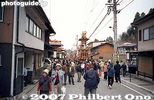
Street lined with floats.
|
|

Jizo statue
|
|

Quite a spectacle.
|
|

Floats are displayed on the street. Takayama Matsuri, Gifu
|
|
|
|

Hie Shrine Sanno Matsuri
|
|
|
|
|
|
|
|

People linger in the shrine after all the mikoshi had arrived.
|
|
|

On the next day June 13, 2004, a Daidengaku troupe performed dances. 大田楽
|
|

Superb embroidery
|
|

It was semi-traditional and semi-modern.
|
|
|
|
|
|
|
|
|
|
|
|
|
|
|
|
|
|
|
|

Storehouse for a float. 屋台蔵
|
|
|

Held on April 14, the night procession is the festival's major highlight. 夜まつり曳行
|
|
|
|

The floats are lit and paraded on the streets.
|
|
|
|
|
|
|
|

On Nakahashi Bridge.
|
|
|
|
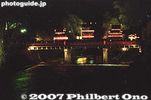
The floats cross Nakahashi Bridge.
|
|

Kentosai Sacred Dance
|
|
|

Shrine maidens perform Kentosai dance
|
|
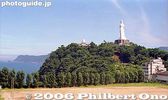
Giant Kannon statue in the distance.
|
|

View of bay, Kamaishi, Iwate
|
|
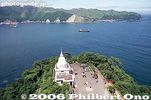
View of bay
|
|
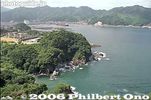
View of Kamaishi Port which was devastated by the tsunami in March 2011.
|
|

Kamaishi Dai-Kannon. She holds a fish.
|
|

Sensoji temple's Kaminarimon Gate. There's a large road in front and also a large paved area where festivals are held. 雷門
|
|

Symbol of Tokyo: Kaminari-mon Gate with a giant red paper lantern. Pass through this gate to reach Asakusa Kannon Temple. 雷門
|
|

One of Tokyo's most photographed buildings: Kaminari-mon Gate with a giant red paper lantern.
|
|

Giant red paper lantern with the kanji characters "Kaminari Mon." The gate was reconstructed in 1960. The previous one was lost in a fire in 1865.
|
|

Under the lantern on the gold cap, there's "Matsushita Denki" (Matsushita Electric Industrial Co. or Panasonic). The current Kaminarimon Gate and giant lantern were rebuilt in 1960 as a donation by Konosuke Matsushita.
|
|

The lantern is covered with a protective net. The lantern can be collapsed like an accordion to allow tall objects (such as a mikoshi portable shrine during the Sanja Matsuri festival) to pass under the gate. It is also collapsed during typhoons.
|
|
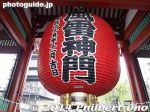
The famous Kaminarimon lantern was replaced with a new one in Nov. 2013. This is the back.
|
|
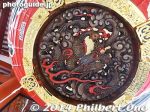
The bottom of the new Kaminarimon lantern has this nice artwork.
|
|

The temple is also called Kinryuzan, meaning Golden Dragon. 金龍山
|
|
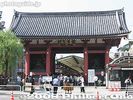
An unusual time when the giant lantern was removed for repairs. Asakusa looks very strange, almost naked, without the giant lantern.
|
|

After passing through the Kaminarimon Gate, this is what you see: Nakamise shopping arcade. When it rains, a canopy is put up.
|
|

Nakamise-dori souvenir arcade. One of Japan's most popular and crowded tourist arcades.
|
|

In spring, a cherry blossom motif is put up.
|
|

At the end of the year and New Year's, auspicious red and white and New Year's decorations are put up.
|
|

Nakamise sells all kinds of Japanese things. Originally, they catered to religious pilgrims. Now it's mostly tourists.
|
|
|

Kimono shop
|
|

Kimono shop
|
|

Traditional footwear
|
|

Paper umbrellas
|
|

Trinkets
|
|

Small Kannon statues for 25,000 yen.
|
|

Approaching another gate called Hozomon Gate. 宝蔵門
|
|

Hozomon Gate ahead. 宝蔵門
|
|
|

Hozomon Gate, means "Treasure Storage Gate." Indeed, the second floor houses important cultural properties. The gate was reconstructed in 1964, a ferroconcrete building.宝蔵門
|
|

Being the main gate, Hozomon Gate is much bigger than Kaminarimon Gate, and it also had a giant paper lantern.
|
|

Hozomon Gate
|
|

Hozomon Gate's giant paper lantern.
|
|
|

Behind Hozomon Gate is a pair of giant straw sandals hanging on the wall.
|
|

Giant straw sandal.
|
|

Sometimes on the way to Sensoji temple in Asakusa, you might see stalls selling seasonal gifts like the Hozuki Ground Cherry Pod Fair held on July 9th–10th.
|
|
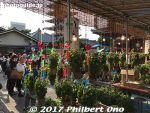
Hozuki Ground Cherry Pod Fair held annually on July 9th–10th.
|
|
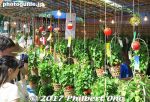
Hozuki Ground Cherry Pod Fair held on July 9th–10th in Asakusa.
|
|

Hozuki Ground Cherry Pod Fair held on July 9th–10th.
|
|

5-story pagoda reconstructed in 1973, made of ferroconcrete. Roof tiles made of aluminum alloy. 五重塔
|
|

Place to buy a omikuji fortune paper.
|
|
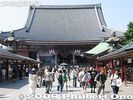
Hondo worship hall was reconstructed in 1958, made of ferroconcrete. The original Hondo was built in 1649 and a National Treasure until it was destroyed during World War II. 本堂
|
|

Hondo worship hall 本堂
|
|

Incense burner always attracts a crowd.
|
|

Incense burner
|
|

Incense burner
|
|

Incense burner. Pat the smoke to the part of your body that needs to be healed.
|
|
|

Water fountain 沙竭羅龍王像
|
|

Hondo worship hall 本堂
|
|

Steps going up to the Hondo main worship hall.
|
|
|

Going to worship.
|
|
|
|
|
|

View from Hondo worship hall
|
|
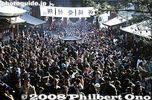
Crowd during New Year's
|
|

Inside Hondo worship hall 本堂
|
|

Hondo worship hall 本堂
|
|
|

Hondo worship hall altar 本堂
|
|

Prayers in front of the altar and offertory box.
|
|

Paintings on ceiling inside Hondo worship hall.
|
|

Painting on ceiling of Hondo worship hall.
|
|
|
|

Hondo worship hall side view 本堂
|
|

Hondo worship hall side view 本堂
|
|
|

Nitemon Gate in the east undergoing renovations. One of the few original buildings still intact. 二天門
|
|
|
|
|
|
|
|
|
|
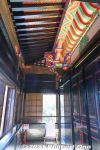
Corridor facing the Funa-roka.
|
|
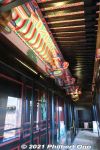
Corridor facing the Funa-roka.
|
|
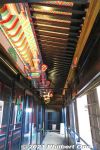
Corridor facing the Funa-roka.
|
|
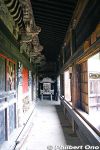
Corridor facing the Funa-roka before the restoration. Everything was drab looking. After the restoration, the windows on the right are now kept closed.
|
|
|
|
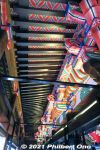
Decorative wooden support assemblages called tokyo (枓栱) or dougong. They are now illuminated to show off the vibrant colors.
|
|
|
|
|
|
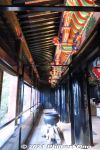
Corridor and incense burner in front of the altar. The wooden pillars totally re-lacquered.
|
|
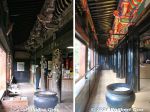
Before-and-after photos of the corridor in front of the altar. The wooden pillars that used to be covered with pilgrim name stickers are now all gone. Pillars totally re-lacquered. 観音堂
|
|
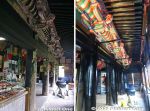
Before-and-after photos of the corridor in front of the altar. The wooden pillars that used to be covered with pilgrim name stickers are now all gone. Pillars totally re-lacquered. 観音堂
|
|
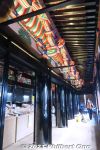
Above the pillars are decorative wooden support assemblages called tokyo (枓栱) or dougong. They have also been brilliantly repainted and even lit up. Dougong are interlocking wood pieces commonly found on temples and shrines as a Chinese influence.
|
|

In front of the main altar of Kannon-do. The hall worships a thousand-arm Kannon statue (hidden from the public).
|
|
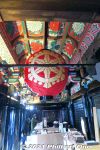
Ceiling in front of the altar includes a red paper lantern.
|
|
|
| 919 files on 4 page(s) |
1 |
 |
|